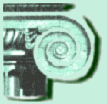
|
|
Library 2.0 and the OPACs of tomorrowLibrary 2.0 is approached as a philosophical and practical framework, which provides ideas and tools to develop Online Public Access Catalogues (OPACs). The author examines in what ways review and recommendation systems, social bookmarking and folksonomies, and RSS feeds can be applied in OPACs. Finally, some critical remarks on the applicability of Library 2.0 are presented. For futher information, please, contact
WorldCat.orgSince August 2006 the OCLC WorldCat database has been accessible for free at the address http://worldcat.org. There has already been about 10 million searches in the database this autumn, even though it has not yet been widely marketed, at least not outside the U.S. However, there is a growing interest in it in Europe, too. It includes also the Finnish National Bibliography since the year 1800, and the records are updated regularly four times a year. Juha Hakala discusses it from the Finnish point of view, with examples of how Finnish material can be found and also how it could be integrated with the domestic systems. For futher information, please, contact
Special libraries database ERKKIThe family of Linnea databases maintained by the National Library of Finland has got a new member, special libraries database Erkki. It provides the libraries of government offices and other small special libraries a chance to join the Linnea network and a cost effective solution for acquiring a library system. The database is owned and maintained by the National Library, which also coordinates the cooperation between the participating libraries and acts as the mediator between them and the system vendors. The costs are divided between the participating organisations. They don't need to invest in hardware nor employ their own technical staff, which contributes to considerable savings. The first libraries to join are the National Archives together with seven regional archives. For them this was also the first impelementation of an automated library system. Therefore no conversions were needed, but a lot of copy cataloguing was done instead. For futher information, please, contact
ILL in crisis in FinlandInterlibrary lending in Finnish university libraries is diminishing rapidly, and if the current trend continues like this it will vanish altogether by the year 2009. Drastic measures and new ideas are needed. User-initiated requests, sharing resources and automation of the process have been the keys to success elsewhere in the world. The author calls for changes in attitudes and library policies to move towards this new direction. For futher information, please, contact
Electronic Resource Management Systems and the Finnish HaltiThe latest addition to the cluster of digital library software are the ERM systems. The National Library of Finland together with the University of Helsinki Library Coordination Unit arranged a seminar on the subject in September 2006. The general introduction to ERMs in this article is based on a paper presented at that seminar by Mr. Ron Davies from the EU Directorate General for Education and Culture. The National Library of Finland currently uses a home made ERM system called Halti2. Leena Salminen and Arja Tuuliniemi describe this system and compare it to the commercial products now being developed. For further information on Halti2, please, contact
The National Library DSpace projectSince Spring 2006 the National Library of Finland has been building an institutional repository system based on DSpace software. The repository will go into production in the beginning of the year 2007. The new system is part of the DORIA digital object management service. The DSpace software has already been used elsewhere in Finland, but the National Library project is piloting the use of Manakin software together with it. Manakin enables easy customisation of the user interface and the creation of different layouts for different users. For futher information, please, contact
Finnish Research Library Statistics database revisedThe Finnish Research Library Statistics database (KITT) has undergone a complete revision. After a few years of test use the libraries have revised and expanded the statistical data, and the the software has been enhanced as well. The next challenge will be to promote the use of the statistics and to develop new performance indicators for library work. The database is available at For futher information, please, contact
|
|
|
Tietolinja 02/2006 |
|
